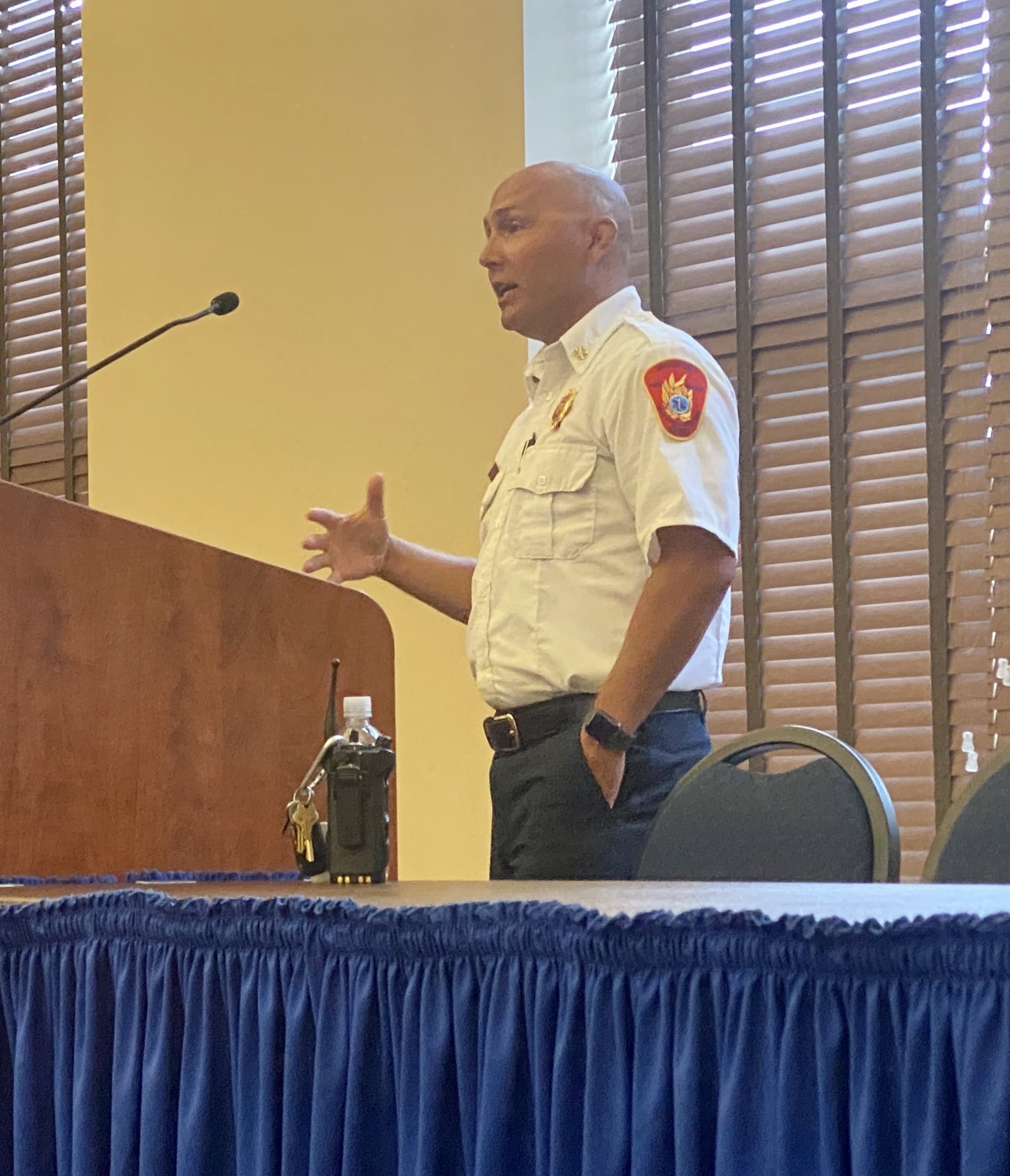Wooster Area Safety Council: Heat-Related Illness and Injuries
Wooster Area Safety Council members were reunited after a 2-year hiatus from in-person meetings. Guests were able to network again with fellow industry professionals and help their organizations to become safer workplaces.
HEAT SAFETY
Fire Chief Barry Saley, Wooster Division of Fire presents to the Wooster Area Safety Council.
Just like our cars and our phones, when our bodies get too hot they shut down. Fire Chief Barry Saley OFE, OFC with the Wooster Division of Fire shared the dangers of what can happen when our bodies overheat, how to prevent those illnesses and what to do if someone is experiencing a heat-related illness. By designating a person to oversee a heat stress program in your workplace, they can develop and manage responses to the potential hazards that could impact your workers.
OCCUPATIONAL FACTORS THAT CONTRIBUTE TO HEAT ILLNESS
High temperature and humidity
Low Fluid Consumption
Direct Sun Exposure (without shade) or extreme heat
Limited air movement
Physical exertion
Use of bulky protective clothing and equipment
PREVENTION
Our bodies regulate temperature by sweating, which leads to a loss of fluid, electrolytes and salt. It is recommended that workers drink one liter of water per hour to remain hydrated. It’s never too early to start thinking about hydration. If you know you will have increased heat exposure later in the day start hydrating early to prevent the impact of heat stress.
Modifying work schedules can reduce workers’ exposure to extreme heat. Utilize the cooler parts of the day and rotate shifts often to reduce the risks associated with heat exposure. It’s important to keep in mind that new workers or workers returning from a long absence may take up to 14 days to acclimate to the environment.
HEAT ILLNESS LOOKS LIKE …
Heat rash is the most common problem in hot working environments. Clusters of red bumps may appear on the skin on the neck, upper chest, and skin folds. The best treatment is baby powder and to keep the area dry.
Heat Syncope can cause dizziness and fainting. If the person falls down first check for other trauma and then begin hydrating.
Heat Cramps are muscle spasms or pain in the legs, arms or trunk and it’s important to start fluid replacement.
Heat exhaustion is the second most serious illness. Symptoms include fatigue, irritability, thirst, nausea or vomiting, dizziness, heavy sweating, and elevated body temperature or fast heart rate. The employee should be taken to a cool area and given water to drink. It is important to stay with the person at this time. Symptoms can continue to develop at which time the employee may need medical assistance.
The most serious heat-related illness is heat stroke. According to CDC.gov, approximately 658 people die annually due to heat-related illnesses. Symptoms include confusion, slurred speech, unconsciousness, seizures, hot, dry skin, very high body temperature (above 104 F), and rapid heart rate. Remove the person from the hot environment immediately and call 911 because this is a medical emergency.
Many of the most hazardous situations caused by heat can be avoided by providing employees with proper training, supplying them with information on the health effects of heat, and the ways to prevent and respond to heat-related illnesses.
To learn more about Wooster Area Safety Council visit woosterchamber.com/wooster-area-safety-council
Jim Pindell, HR Manager Rayco Manufacturing welcomes the Wooster Area Safety Council back to the first in-person meeting.
Stephen Hanna, MS CSP shares updates from the Bureau of Workers’ Compensation.








